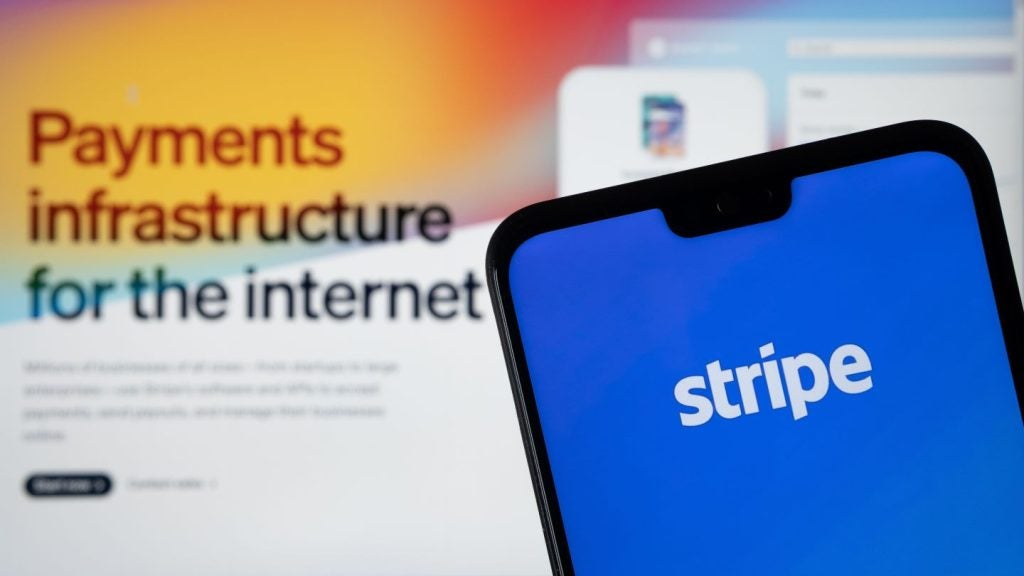
Canada’s financial industry experts talk to Robin Arnfield about the key developments, shocks and successes of 2016, and provide insight and forecasts on how they see the landscape developing in 2017. what twists and turns will the cards sector in North America take next year?
The key event for Canada’s payments industry in 2016 was undoubtedly the long-anticipated launch of Apple Pay by the country’s credit and debit card issuers in May. This was followed by the November 2016 launch of Samsung Pay by CIBC, the only issuer so far to support the mobile payments platform. In December 2016, American Express introduced Amex Pay in Canada for Android devices.
“Apple’s Apple Pay agreements with the big six banks was a watermark point in terms of scaling mobile wallets and getting them into the hands of millions of retail banking customers,” says Paul Battista, Ernst & Young Canada’s financial services advisory leader.
“In 2017, we will start to see a significant rise in mobile wallet usage, as this will be the first full year of mobile wallets being in the market.”
During 2014 and 2015, Canadian banks developed their own Android-based mobile wallets.
“All the major Canadian banks have their own Android-based payment apps in addition to supporting Apple Pay,” says Mike Bradley, former head of products at Visa Canada and now managing director of Canadian consultancy NorthCard.

US Tariffs are shifting - will you react or anticipate?
Don’t let policy changes catch you off guard. Stay proactive with real-time data and expert analysis.
By GlobalData“Led by RBC and TD, they are now in the process of converting their proprietary mobile wallets from hardware-based security on smartphone secure elements to cloud-based technology.”
Contactless payments
So far, there has been little consumer adoption of mobile wallets in Canada, with the vast majority of contactless payments occurring via contactless cards.
According to Canadian consultancy Technology Strategies International’s Canadian Payment Forecast 2016, the value of contactless card payments rose by nearly C$30bn ($22.85bn) year-on-year to C$54.5bn in 2015.
“From a transaction volume point of view, the most interesting trend is contactless payments, which are growing by leaps and bounds in Canada,” says Christie Christelis, president and CEO of Technology Strategies International.
“But not much of contactless is mobile at this stage. There are stores in Toronto with a sign on the POS terminal saying: sorry, there is no tap-and-go. This shows that consumers want contactless and that it’s becoming the new norm for certain types of transactions.”
“From a technology viewpoint, the arrival of Apple Pay was important, but it still doesn’t have a lot of traction in Canada,” says Christelis.
“The number of people with an iPhone 6 or better who can perform NFC transactions, understand how to put a payment card into the Apple Pay app, and use it in a store, is still quite small. But there will be more adoption as the number of phones with contactless capability increases.”
“With mobile wallets, the user experience has to be really good,” says John Armstrong, national industry leader of financial services at KPMG Canada.
“But, if you look at the ratings in the app stores for Canadian banks’ mobile banking apps versus their mobile wallets, the banking apps get much higher scores than the mobile wallets. That indicates that the banks need to work on improving their mobile wallets.”
“We won’t see an explosive growth rate in mobile payments in Canada, so we’re in for the long haul,” Jason Davies, MasterCard Canada’s head of digital payments, says.
“But Canada will be one of the leading markets globally for mobile payments, as we have such a great underlying infrastructure for contactless payments.
“There is a very high contactless card reader installed base in Canada, with many of the top merchants now accepting contactless payments.”
“Mobile devices have to do something extra beyond just providing an easy payment experience,” says Davies.
“In 2017 and beyond, we will see value-added services being tacked on to mobile payment platforms which will lead to a much sharper growth in adoption. Biometric-based authentication services such as MasterCard’s Mobile Identity Check will be a part of this.”
“Security will continue to loom large for consumers in 2017,” says Battista.
“In our consumer research, security is still the largest barrier to people adopting mobile payments in Canada and worldwide. So the challenge is to ratchet up consumer education, because fundamentally there is a consumer belief that mobile wallets are less secure than cash.
“Many consumers are unaware of the transformative impact of tokenisation on mobile payments security. The industry needs to push out information about mobile wallets such as promotions and incentives as well as education on the security benefits.”
Fintechs and banks
“The fintech sector in Canada is a five-to-10-year development,” says Christelis.
“A lot is going on in the space as there’s so much scope for development and there will be some disruptions in the next five years.”
“From a consumer numbers perspective, the use of fintechs is relatively low in Canada,” says Battista.
“But, according to an EY survey, 30% of Canadians have a decreased dependence on their bank and 40% have used non-bank providers in the last 12 months.
“An additional 20% who did not use a non-bank provider plan to use one in the near future – so 60% of the market is using or will use a non-bank provider,” Battista continues.
“Consumers, having had great digital experiences outside financial services – ordering coffee or consuming music – are finding that the level of customer experience and service from their banks is wanting.
“So this is why they’re so much more open to trying non-bank providers.”
Battista says the implication of this heightened expectation for improved customer experience and zero friction in banking and payments is that banks’ design of apps and customer experience needs to be informed by design thinking and the customer mindset, not the product mindset.
“This will be a huge trend in 2017,” he says. “In Asia, many banks and fintechs talk not about having a digital bank, but about offering a lifestyle platform with a cool friction-free payments interface. This concept is coming to Canada.”
“There are quite a few fintech start-ups in the Canadian market dealing both with the top six banks and with smaller banks,” says Bradley.
“In retail banking, fintech is very important, as it’s moving from firms being disruptors to banks, to fintechs being the enablers,” says Armstrong.
“We’re seeing the top Canadian banks starting to get into partnerships with fintechs, for example CIBC with small business credit provider Thinking Capital, RBC with health insurance provider League and TD with mobile banking and money management app provider Moven.
All the top six banks have invested in digital ID platform developer SecureKey.
In general, 2016 was the year when banks started to embrace working with the fintechs, and, for some of the banks, there has been a noticeable impact on how they do things internally.
These banks now have a big focus on moving from a traditional waterfall development process to building digital platforms with a more agile approach.”
Two Canadian fintechs highlighted by Bradley are cloud-based loyalty and payments platform developer nanoPay and mPOS solution provider, Dream Payments. In December 2015, nanoPay acquired the MintChip digital currency from the Royal Canadian Mint and is testing MintChip in Liberty Village, a small neighbourhood in Toronto.
In October 2016, nanoPay raised $10m in Series A financing to help with the global acceptance of MintChip, which it is promoting as a digital value platform.
“Our focus is now on expanding the MintChip platform beyond digital cash to a broad range of B2B use cases that have global applications, for example, business-to-consumer disbursements and cross-border payments,” Laurence Cooke, CEO and founder of NanoPay says.
“Dream Payments is making real headway among telcos and major banks to address smaller merchants’ mPOS needs,” adds Bradley.
“It offers a white-label platform with low-cost payment devices to enable smaller merchants to take credit and debit card payments.
“Dream Payments has hired Jordan Cohen, former president of Global Payments Canada, the second-largest transaction processor in Canada, as chief commercial officer.”
Regulation
“There’s an on-going examination of the economics of credit card payments in Canada,” says Bradley.
“The Minister of Finance said in September 2016 that the Department of Finance plans to review interchange again at some undisclosed point in the future. Interchange is a topic that’s always top of mind in the Canadian payments sector, as there is still a lot of pressure on interchange.”
In a statement, the Minister of Finance said: “The Government of Canada acknowledges the independent audit findings that both Visa and MasterCard have met their respective commitments [in November 2014] to reduce credit card interchange fees, which include reductions of interchange fees for small and medium-sized enterprises and charities.
In order to ensure that there is, in fact, adequate competition and transparency for Canadian businesses and consumers when it comes to the fees they incur when using credit cards, the government will conduct a further assessment of the fees charged by credit card networks and review the effects of the fee reductions.”
Separately, a Liberal MP’s private member’s bill (Bill C-236) to amend the Payment Card Networks Act (Canada) in order to limit ‘credit card acceptance fees’ had its first reading in Canada’s House of Commons in February 2016.
“This bill is a bellwether for concern about interchange rates,” says Bradley.
“It was applauded by business groups and increased the momentum for the government to plan an interchange review.”
Walmart has initiated a trial of ending Visa credit card acceptance at its Canadian stores. The trial started at Walmart’s stores in Thunder Bay, Ontario and has been extended to Manitoba.
“This is a big potential shift,” says Bradley. “Walmart’s move with regards to Visa was well-calculated, but it remains to be seen if it is purely a negotiating tactic.”
Payments infrastructure modernisation
In December 2016, Payments Canada, the non-profit body which oversees Canada’s core clearing and settlement systems (formerly known as the Canadian Payments Association), announced plans to modernise the country’s payments infrastructure and rules. It also solicited comments on these plans from industry stakeholders.
Payments Canada says that changes will be made to existing payment systems to help financial institutions exchange payments faster and more frequently, giving individuals and businesses more immediate access to funds.
This will include implementing a real-time payments capability and deploying the ISO 20022 global messaging standard to encourage businesses to move from paper-based invoicing and cheques. Benefits of ISO 20022 adoption will include enhanced payment information and streamlined cross-border payments, Payments Canada says.
“Right now, Canada’s small businesses still write a lot of cheques,” says Armstrong.
“But giving them the ability to make electronic payments that they can attach detailed billing or remittance information to, will encourage them to migrate from cheques.”
A new core clearing and settlement system will be implemented and operated by Payments Canada to ensure Canada remains competitive in the global payments industry.
The legal framework underpinning Canada’s payment clearing and settlement systems will also be modernised to facilitate the changes and support future innovation and improvements, Payments Canada says.
“Canada’s two core systems, the Large Value Transfer System (LVTS) and the Automated Clearing and Settlement System (ACSS), are both antiquated,” notes Armstrong.
Vision
“We’ve created a vision for the future of payments in Canada, and moved into a programme initiation phase,” says Jan Pilbauer, Payments Canada’s executive director of modernisation and CIO.
“We now have a high-level roadmap that tells us how we can start executing on delivering our programme to meet Canadians’ needs. Having shared this programme with the financial institutions, we are now taking it to the wider community of businesses and public users.”
Payments Canada has outlined eight significant needs identified by end users in Canada, including faster payments, easier payments where simple identifiers such as a cellphone number can be used, transparent payments providing status reports to users, easier cross-border payments, and smarter payments using ISO 20022 where business data travels with the payment item.
“For us, faster payments is just one component,” says Pilbauer.
“It’s also about smarter, safer and fairer payments and less tiered access. We heard from end users that there are some use cases where payments need to be faster, for example when people want to make P2P payments.
“But I don’t think we will go to real-time settlement, as what matters to users is that the system is available 24/7 to deliver funds from payer to payee in a short period of time.
“We heard from businesses that payments shouldn’t be just about moving value from one firm to another, but also about moving the associated data,” Pilbauer continues.
“Smarter payments is where you harvest most of the efficiency, due to straight-through processing with no manual input as one firm sends payments to another firm and includes invoice information.
“So we’ve committed to ensuring all our new systems will be ISO 20022-enabled.
“Our ISO standard allows for very rich information, so you can push a lot of data with payments.”
Pilbauer says Payments Canada’s programme will take three-to-four years.
“We will be modernising our core systems, but modernisation won’t stop once our new systems are in place,” he says.
“Our research found that, when other countries introduce faster payments, they have other, legacy payment systems that continue to be used. It’s a mistake to think that everything will migrate to new faster payments systems.
“So our roadmap will deliver some functional enhancements to our existing legacy payment systems such as our Automated Fund Transfer (AFT) system which is used for payroll and recurring payments.
“We heard from end users that there are payments that don’t need to be real-time but just faster,” explains Pilbauer.
“So in 2018 we will introduce more time slots to the AFT system during the business day when payments can be made. This will benefit Western Canada whose time zone is three hours behind Eastern Canada – currently, our last payment slot is 4.30pm EST (1.30pm PST).”
Pilbauer’s view is that Canada’s new faster payments platform and enhanced legal framework will provide the rail for new, innovative services to be introduced by payments companies.
“When you build a road and have a legal framework for drivers, the road can be used initially by traditional fossil-fuel cars and then by new types of vehicle such as electric cars or driverless cars,” he says.
“We want to make sure there is a level playing field for our new platform, so service providers can connect to it to offer services such as paying emergency bills or making payments for purchases on a social media auction site.”







